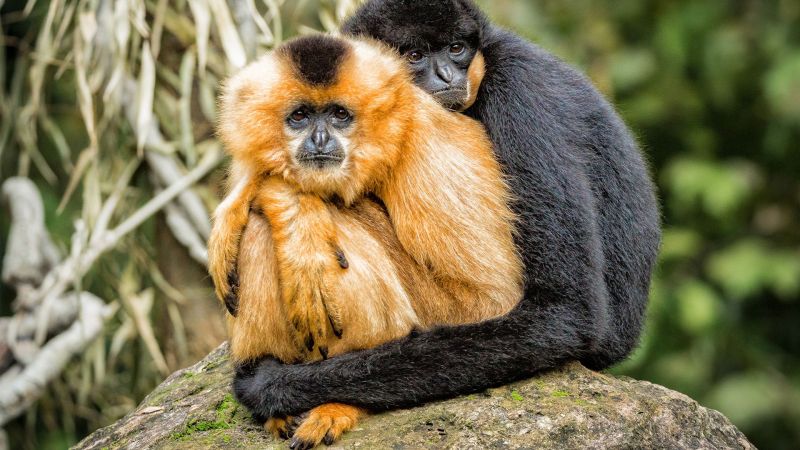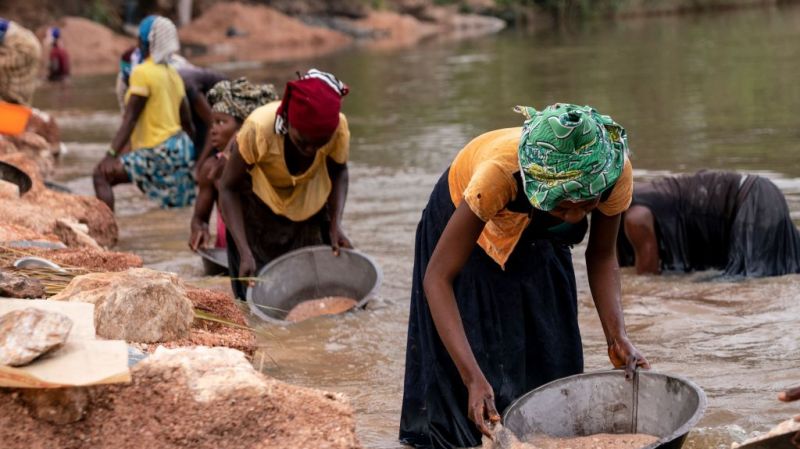When AI Goes Ape
Applying AI models to wildlife management gives outmanned conservationists a chance to protect rare species

Twenty-eight per cent of the world’s assessed plant and animal species are at risk of extinction, and despite growing commitments to biodiversity conservation, the number of threatened species has continued to rise over the last three decades.
Solving the world’s biodiversity crisis is a daunting undertaking, not only in scale but complexity. Habitat destruction, overexploitation, illegal trade, invasive species, climate change and many other factors confound even the most dedicated conservationists. Global resources are inadequate to prevent what the United Nations refers to as the largest extinction event since the dinosaur age.
Jue Wang, associate professor and Distinguished Research Fellow of Management Analytics at Smith School of Business, has spent most of the past decade developing artificial intelligence models that help businesses optimize operations and improve their bottom line. He is now investigating how those AI models can be leveraged to help save endangered species.
“The business and biology communities often seem like parallel worlds,” says Wang. “They rarely talk to each other.”
It was a chance encounter with Zhigang Jiang, an ecologist who leads a conservation program of the Hainan gibbon, that inspired Wang’s current line of research. During a flight, the pair talked about their research areas—Wang’s at the intersection of analytics, AI and operations, and Jiang’s in biodiversity conversation.
“I realized that was something I could help with,” Wang says, noting that the methodology he developed could be used to help biodiversity conservation. “This part of the world hasn’t been benefiting much from the skills and tools that we develop for companies.”
Finding an ape in the forest
Early detection plays an important role in treating diseases in healthcare settings. The earlier disease is identified, the easier it is to treat. In the absence of symptoms, early identification relies on screening, which is costly and can pose risks to the patient. It becomes a constant weighing and balancing of timing, cost, and benefits and risks, says Wang.
As he has learned, the same is true in the conservation of threatened species. Working with Jiang and two PhD students—Roozbeh Yousefi and Xueze Song—Wang investigated the use of an AI decision process model to help track the world’s rarest primate, the Hainan gibbon.
“Here we don’t know where the species is, and if we don’t find it quickly it’s going to disappear,” says Wang. “The population has become so small that it’s very hard to find."

Only 42 of the small apes have been recorded living in Hainan Island’s Bawangling National Nature Reserve, off the southern coast of China. But unverified individual sightings have been reported in other regions of the island.
Finding and verifying the existence of these outliers—which generally have lower survival rates—is no easy feat, as solitary gibbons call less frequently and roam over large areas. Knowing where, when and how long to spend monitoring a given area is crucial, especially with limited funding and resources.
This is where the AI model that Wang and his colleagues developed can help. “You can think of this as the same type of AI behind AlphaGo,” he says. AlphaGo was the first computer program to beat a human professional Go player in the strategy board game. Just as AlphaGo optimizes a long sequence of moves to win the game, the researchers’ model finds a long-term strategy to save the species.
“What you do today may not be effective immediately but it’s part of a strategic process where the accumulation of those small steps eventually saves the species,” Wang says.
Using historical sighting data, the researchers evaluated the probability of gibbons being present in potential habitats. Based on this information, the model reveals how search and protection efforts can be optimized in space and time. While conservation resources are often targeted at areas where the species have previously been detected, the modelling suggests that areas with no detection record may be more fruitful searching grounds.
Leveraging data in wildlife management
Wang is now putting the model to the test in two separate fields. Here in Canada, he is working on a new model to help Natural Resources Canada monitor the spread of invasive species in the nation’s vast forests. In the U.S., he is working with the Cornell Wildlife Health Lab to improve the monitoring and management of Chronic Wasting Disease—known as “zombie deer disease”—in New York State’s white-tailed deer population.
“Right now wildlife management decisions are made mostly in an ad hoc way,” Wang says. When it comes to the three levels of business analytics (predictive, descriptive and prescriptive), he notes the conservation agencies have the first two covered. The AI-based model helps deliver on the latter to help conservationists decide on the best option to focus their efforts. “We are trying to bring this end to end.”
While companies are always looking to improve how they leverage data to make smarter decisions, Wang says the task can be more challenging for those managing natural resources, given the scope, uncertainty and available resources.
“The funding is far less than what’s needed…and there are so many things that you need to do,” he says. The upside, though, is substantial. Applying advanced analytics in this context can help managers optimize conservation budgets and direct resources to the most promising areas.
Says Wang, “This is an untouched area where we can bring transformative change benefiting the planet.”




